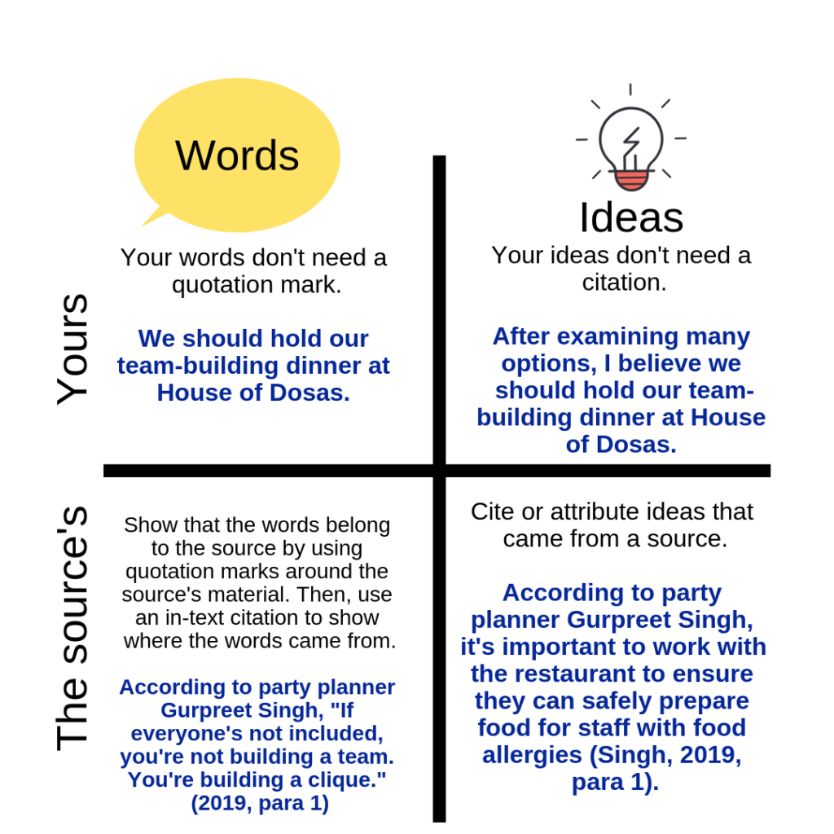
For additional assistance with these Citation Styles, you have several options for help.
1. Consult a librarian at the Circulation Desk,
2. Use the ECC Library Chat service
3. Call 641-648-8560
4. Visit one of our Writing Center Tutors in the library.
5. Make an appointment for a One-On-One Consultation with the librarian
MLA 9: Ashman, Melissa. Citing Sources Graphic. https://pressbooks.bccampus.ca/profess ionalcomms/chapter/2-4-citing-sources/. Accessed 14 Apr 2022.
APA 7: Ashman, M. Citing Sources Graphic [Image]. Retrieved 14 April 2022, from https://pressbooks.bccamp us.ca/professionalcomms/chapter/2-4-citing-sources/.
Whether writing a paper for an introductory writing course or an internationally recognized scientific journal, your credibility is important. Using and citing trustworthy information are building blocks to being a reliable source.
What should you cite?
What don't you need to cite?

Some of the databases that we subscribe to will create citations automatically for the articles, essays, or books you are viewing. Others will allow you to export the citations to a citation manager, such as RefWorks.
Look for a "Cite This" or "Citation" button on the record for the viewing article or chapter. Unfortunately, not all databases have this link.
|
EBSCOhost Databases |
ProQuest Databases |
CQ Researcher |
|
|
|
|
Many different tools exist to assist you in creating a citation entry. There are advantages and challenges to working with these tools.
Common mistakes include:
The biggest mistake is completely trusting a citation generator to make no errors. Make sure you closely review all citations created in this way. You will also still want to refer to your citation style guide to learn how to format your works cited/reference page.
There are quite a few different ways to properly cite resources in your paper. The citation style usually depends on the academic discipline involved. For example: